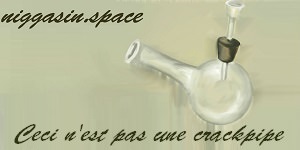There are potent nerve agents that have no standard unit of measure anywhere in the world, they are largely unknown which is what makes them so deadly, how can you defend against something you barely understand?.
The possibilities of G agents are thus limited, due to their relatively simple structure. In V agents, there are larger possibilities, particularly when changing the O-ester and thiocholine group, but even in this case, no compounds more toxic than VX or R-33 have been found.
A further possibility is the synthesis of compounds based on mutual combinations of certain structural elements of G and V agents and possibly the introduction of certain new functional groups into the molecule. It is possible to believe that this approach was employed in the synthesis of the substances (A-230, A-232, A-234) of the Soviet binary program, NOVICHOK. The principle of these substances is, however, secret, and the admissible data are controversial. According to American sources, these are phosphorylated oximes from the group of O-chloro(fluorocarbiminoyl-O-[(2-chloro-1,2-dialkyl)ethyl]phosphorofluoridates
Possibly more properly informed Russian sources report that the substance, A-230, is a liquid and stable methyl-{N-[1-(diethylamino)ethylidene]amido}phosphonofluoridate, the intravenous and percutaneous toxicity of which exceeds the toxicity of the VX by a factor of five to eight. Over several years, scientists synthesized more than a hundred structural variants of the substance, A-230, and tested them systematically. They also prepared its phosphate methoxy- and ethoxy-derivatives marked by the codes, A-232 and A-234. The toxicity of both substances is reportedly comparable with that of VX, but compared to the substance, A-230, they are less volatile and resistant to moisture. Ultra-toxic solid derivatives have also been reportedly synthesized, having a guanidine radical instead of the amidine one (substances A-242 and A-262)
The Novichok series discovered by Petr Kirpichev and his team in Shikhany, was a huge breakthrough for CW development in Russia. They were a new series of chemical agents with the P-N bond instead of a P-S- bond. At first he synthesized agent A-230. Medical biological assessment of this agent was performed at the polygon and laboratories of Military Unit 61469, and it produced positive results with a toxicity 5 to 8 times greater than Agent 33. Then Kirpichev synthesized the phosphate version of A-230 – Agent A-232 with the same toxicity as Agent 33 but more volatility than the later and Agent A-230. Agents A-232 and A-234 are phosphates, which are not listed in the CWC list of chemicals subject to international control
http://www.sciencemadness.org/talk/viewthread.php?tid=7639The novichok reaction is the "Allen Reaction" between two moles of a trialkyl posphite and one molea beta-trihalonitroalkane, the most familiar such compound being trichloronitromethane, (chloropicrin) Cl3CNO2. The much less familiar nitroso compound Cl3CNO also works. There are some constraints on the choice of substituents.
1. One of these must be chlorine, this is what attacks phosphorus initially.
2. The others may be Cl, Br, F or a psuedohalogen e.g. -CN. These are the substituents that remain in the oxime ester side chain. These may be identical or different.
The product is an exime ester of a dialkyl, dialkoxy, alkyl halo, or alkoxyhalophosphate.
The preparation of the chloropicrin and analogs is well known.
The most convenient prep of trichloronitrosomethane is one starting from trichloromethyl sulfenyl chloride, also known as perchloromethyl mercaptan, the familiar product of chlorination of CS2 with dry chlorine in diffuse light.
This is oxidized to trichloromethylsulfonyl chloride according to the procedure of Prandl and coworker in Ber., 62 1752, (1929). A technical grade of this may be available from Eastman Kodak.
The sulfonyl chloride is reduced with sodium in ethanol by the technique of Prandle and coworker in Ber. 65 (1932). The product is sodium trichloromethylsulffinate.
The procedure described in same peper for preparing the trichloronitrosomethane, a deep blue liquid, from the sodium salt of the trichloromethylsulfinic acid is simple but causes some thermal decomposition and also produces a product not free from water.
The same salt can be reacted in the cold with nitrosyl chloride in liquid phase, under autogenous pressure, the reaction being complete when the mixture is allowed to warm to O C. This procedure is detailed in a paper by Suttcliffe in JACS 79 3071 (1975). The anhydrous trichloromethylnitrosomethane is well suited for use directly in the Allen reaction.
https://archive.org/details/DTIC_AD0052118



